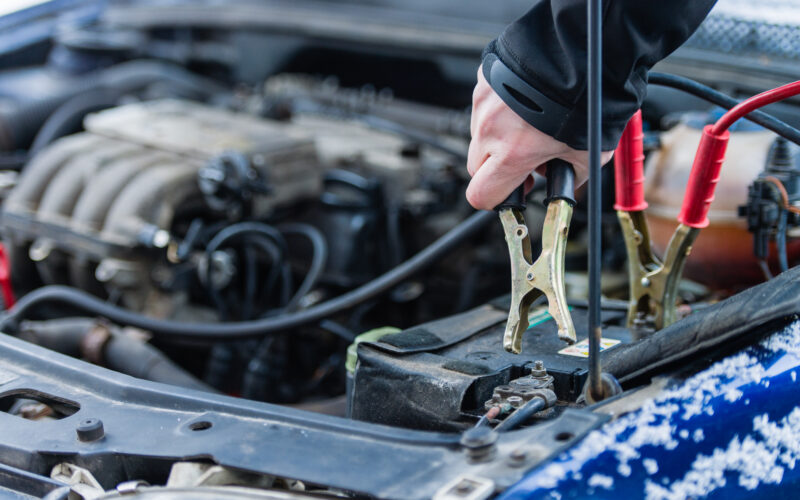At Farm Bureau Insurance, we believe it’s important for every driver to have some basic troubleshooting knowledge when it comes to their vehicle—just in case of an emergency. You don’t have to be a professional mechanic to know your way around a couple of unforeseen mishaps, like changing a flat tire or jump-starting a stalled or dead car. In this blog, we’ll discuss how to jump-start your car.
Note: The following is general knowledge that should apply to most vehicles, but not all. If you are unsure on how/if the information suits your vehicle’s need, please consult your owner’s manual or a professional mechanic.
Get Booster Vehicle in Position
This is mostly determined by where the dead vehicle has stalled. Ideally, the booster vehicle can be safely positioned in front of the dead vehicle, bumper-to-bumper, allowing them to be close enough for the jumper cables to reach.
Next, be sure to shut off the ignition on both vehicles, and remove the keys. Set the emergency brake on both vehicles. Lastly, turn off all accessories, including things like climate control, lights, and radio.
Locate Battery Terminals
Open the hood of both vehicles and find the batteries. The battery will have a positive (+) and negative (-) terminal, with the positive post having a red cover, and the negative post being black.
Do a quick inspection to make sure each terminal is free of corrosion. If the posts are coated with a white or greenish substance, remove it using a wire brush or anything except your bare hand, as the corrosion could irritate bare skin. If the battery is cracked or leaking, do not attempt the jump.
Connect the Jumper Cables
Jumper cables are also marked with red and black handles to indicate positive and negative. The red clamps connect to the positive posts and the black clamps connect to the negative posts. Touching the wrong cable to the wrong battery terminal could create a spark, or worse, give off an electrical shock, so be sure to connect the cables in the following order:
How to Connect the Jumper Cables
- Attach the red clamp to the positive terminal of the dead battery
- Attach the other red clamp from the other end of the cables to the booster battery’s positive post.
- Attach the black clamp to the negative terminal of the booster battery
- Attach the black clamp to an unpainted metal part on the engine, like a bolt or bracket, at least a few inches away from the battery of the dead battery
Note: Some newer models have a grounding bolt marked with a placed solely for this purpose.
Jump-Start the Cars
First, double-check that the booster cables aren’t near moving engine parts. Start the engine of the booster vehicle and let it idle for three to four minutes.
Start the vehicle with the dead battery and if the engine doesn’t turn over right away, you’ll need to wait a few more minutes for the battery to build a charge.
After the dead vehicle is running and the battery is charged, you can now disconnect the jumper cables in the reverse order from above. Since the vehicles are still running, be sure to use caution when disconnecting the cables. Do not let the jumper cable ends touch any metal or the other clamps.
We recommend that the restarted vehicle is driven for at least 20 minutes to allow the alternator to recharge the battery. In case the charge doesn’t hold, don’t turn the vehicle off until you’ve reached a safe destination.
Don’t feel comfortable jump-starting your car? Farm Bureau Insurance offers auto coverage that’ll help when you need it. Our roadside assistance will get you back on the road in no time. Learn more by contacting a local Farm Bureau Insurance agent using our Agent Finder.

